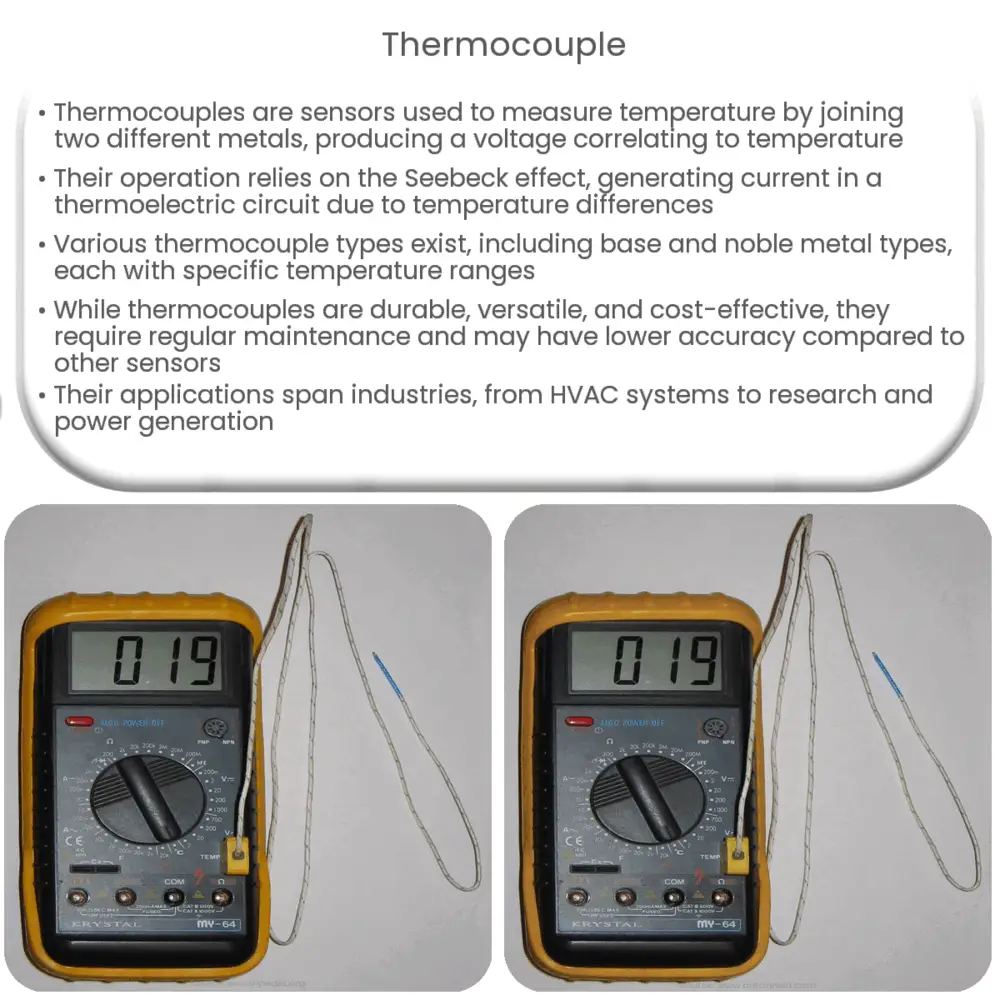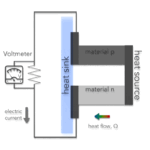Explore the workings of thermocouples, their types, benefits, limitations, and applications in diverse industries, with a glance at their future.

Introduction to Thermocouples
A thermocouple is a sensor used for measuring temperature. It consists of two different types of metals, joined together at one end. When the junction of the two metals is heated or cooled, a voltage is produced that can be correlated back to the temperature.
The Working Principle of a Thermocouple
The fundamental principle behind thermocouples is the Seebeck effect, named after the physicist Thomas Seebeck. He discovered that when two wires composed of dissimilar metals are joined at both ends and one of the ends is heated, there is a continuous current which flows in the thermoelectric circuit. This effect is due to the difference in temperature between the two junctions of the circuit, known as the hot junction (measurement junction) and the cold junction (reference junction).
Types of Thermocouples
- Type J, K, T, & E: These are collectively known as the ‘Base Metal’ thermocouples. The most common type is the Type K, which is made from Nickel-Chromium / Nickel-Alumel and has an operating temperature range of -200 to 1250°C.
- Type N: It is quite similar to the Type K but offers superior performance and stability. It has an operating temperature range of -200 to 1300°C.
- Type S, R, & B: Known as the ‘Noble Metal’ thermocouples, these are made from Platinum / Rhodium alloys, and are used in high temperature applications (up to 1700°C).
Thermocouple Construction
Thermocouples are typically available in two constructions: grounded and ungrounded. In a grounded thermocouple, the thermocouple wire is physically attached to the inside of the probe wall. This allows for faster response times since heat transfer is more direct. However, this can lead to electrical interference.
An ungrounded thermocouple has the thermocouple wire detached from the probe wall, which can reduce the potential for electrical noise but may result in slower response times.
Benefits and Limitations of Thermocouples
Thermocouples offer many advantages, including their wide temperature ranges, durability, and low cost. However, they also have some limitations such as lower accuracy compared to other temperature sensors and the necessity for a reference junction.
Applications of Thermocouples
Thermocouples are widely used in various industrial and scientific applications due to their versatility. Some typical applications include:
- Temperature Control Systems: Thermocouples are often used in HVAC systems, ovens, and industrial machinery to monitor and control temperature.
- Manufacturing Processes: Many manufacturing processes such as plastic production, steelmaking, and food processing require precise temperature measurements. Thermocouples provide an effective solution in these scenarios.
- Power Generation: In power plants, thermocouples are used to monitor the temperature of critical components like turbines and boilers.
- Research and Development: In scientific research, thermocouples are used to measure temperatures in a variety of experiments and studies.
Maintaining and Troubleshooting Thermocouples
Maintenance and troubleshooting of thermocouples are crucial for ensuring accurate temperature measurement. Over time, thermocouples can drift from their calibration and may need to be recalibrated or replaced. Common issues that can affect thermocouple performance include physical damage, contamination, or prolonged use at high temperatures.
Future of Thermocouples
As technology advances, thermocouples continue to evolve. Developments in materials science may lead to the creation of new types of thermocouples that can operate in more extreme conditions or offer improved accuracy. Additionally, advancements in digital technology have led to the development of smart thermocouples that can communicate directly with computer systems, providing real-time temperature data and advanced diagnostics.
Conclusion
In conclusion, thermocouples are a critical component in many temperature measurement and control systems. Their simplicity, versatility, and wide operating range make them an invaluable tool in numerous industries. Despite their limitations, their proven track record and ongoing advancements in thermocouple technology ensure that they will continue to be a popular choice for temperature sensing in the future.


